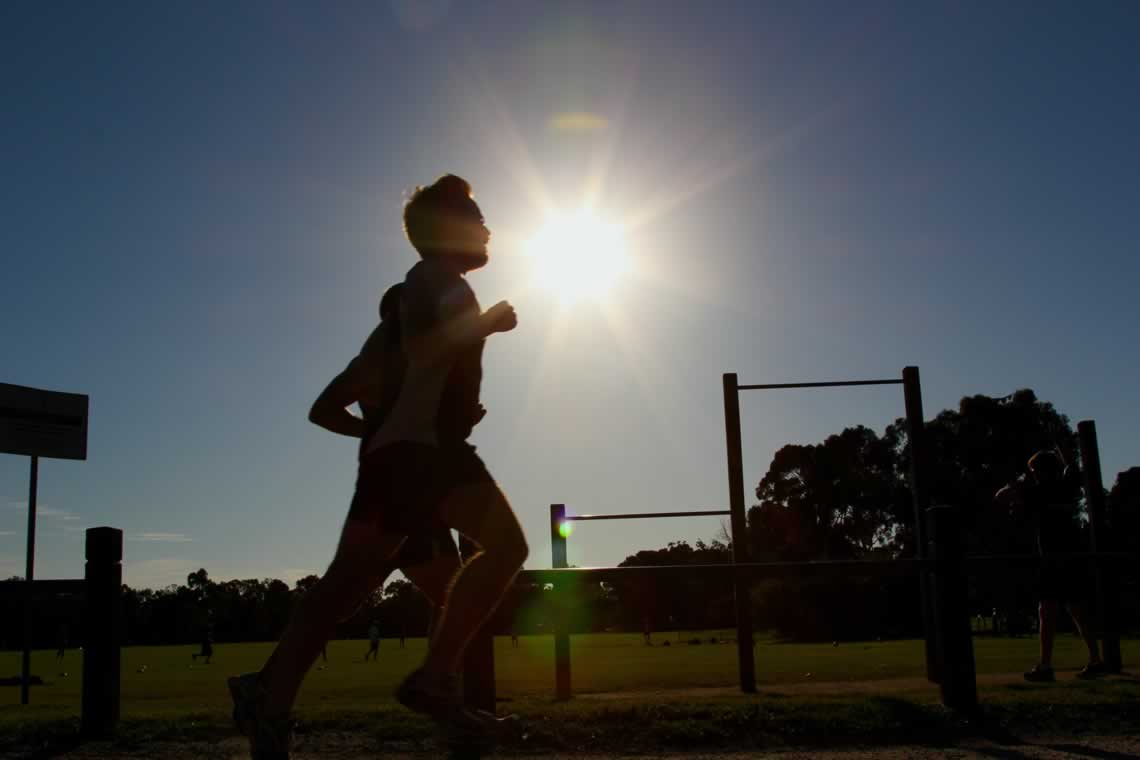Keep your running on track through the summer by Hannah Lees
It’s summer time – hooray! After a spring of snow and ice disruption, some sunshine and the chance to go for a run without getting frostbite is very welcome. The mornings and evenings are light, and the mud has dried out on the trails. Happy days!
But if you have children you may be viewing the school holidays with some trepidation, at least in terms of what it’s going to mean for your running, and if you’re not a parent there are still things going on over the summer that can impact your running. The regular routine of the work commute and the school run makes it easier to plan in your runs and stick to a schedule. When routines go out of the window your running can suffer. So, what can you do about it?
Here are some solutions to common summertime running problems – everyone’s situation is different so please do chip in with your own suggestions or questions!
Treat the summer as a rest and recovery period
We all need some easier weeks in our training plan from time to time, so don’t stress out if you have to ease up on your exercise for a while. If you can keep up a basic level of activity and get back to normal training once the summer is over you will be fine. It takes 2 weeks of total inactivity for your fitness to begin to decline and even then it’s a small percentage per week. If you can only run twice a week instead of three or four times that’s not a problem. In fact you may find that a reduction in mileage will also reduce the aches and niggles that plague regular runners.
Going on holiday
If you’re lucky enough to be jetting off somewhere over the summer, you’ve probably already started thinking about the how’s, where’s and when’s of running. In hot destinations the only suitable time to run is early morning. Set your alarm and duck out for some intervals at sunrise – make sure you warm up for 5-10 minutes first, then if you’re a beginner/intermediate level runner try 2 minutes hard, 2 minutes recovery for 4 or 5 reps, and if you’re intermediate/advanced 3 minutes hard with 90 seconds recovery for 5 or 6 reps. Have a stretch, and then dive into that crystal clear pool to cool off!
Staying active with your family
Juggling childcare over the summer is often a headache. If your normal exercise slot has been gate-crashed by your offspring, then there may still be ways to fit in some physical activity. If your children can ride a balance or pedal bike, or scooter, go out with them. Chances are you’ll get an impromptu fartlek session as you race to catch them up, and if they need a push on the hills you’ll get added strength and conditioning. Win-win. Get your children and their friends involved with a game of football or rounders in the park, or just play tag until you’re all exhausted! If you take your children to any activities, see if you can have a go too.
Find alternatives
Can’t make it to the gym? Try bodyweight exercises in your garden. No time for an after work or evening run… could you do a run-commute or lunchtime run? Set your alarm half an hour earlier and run before breakfast.
Coping with summer heat
Some lucky people are unaffected by hot weather. For others heat makes them feel drained of energy. Switching to early morning running can help. Wetting a hat or buff to wear on your head can help keep you cool. But to put it simply – if the weather is hot run slower. Stay well hydrated throughout the day and rehydrate afterwards with something that will replace the salts you’ve lost through sweating as well as the water. If it’s a scorching day avoid the hottest part of the day, keep your run short or skip it altogether.
Making the most of the time you have
You might not have the luxury or an hour or two for a long run, but short, intense runs are great for your fitness and can slot in anywhere. 20 minutes of hill reps is a tough session that will benefit you hugely. Run hard up the hill for 45 seconds then walk back down for 2 minutes. You only need to time the first one then simply aim for the same point on the hill each time. Depending on your level of fitness you can do anywhere between 6 and 12 reps. You can build timed intervals or fartleks into any run – keep it simple: run hard for two lamp posts and jog one to recover.
Plan your exercise and stick to your plan
My number one tip for every runner I coach is to plan their runs in their diary, write them in and defend that time. This is even more important at holiday time. You might need to explain to your partner how important your running time is to you. Remind them that you’re a nicer person after you’ve had a run or do deals to get your runs scheduled. Don't let excuses get in the way. It can be tempting... very tempting... to crack open a beer and sit in the sunshine, but you can do that AFTER your run.
Returning to it after the summer…
It doesn’t take long to get out of good habits and into bad ones. If you do fall off the running wagon over the summer draw a line under it, make a new plan and make it happen. Depending on how much running you’ve done or not done you may need to ease back into running. Scientists have proven that muscle memory exists. Your legs know how to run. Even if you feel like you need to start at the beginning all over again you’ll get back to where you were before in no time. Build your distance and time back up in small, manageable chunks, such as adding 1km to your distance each week. Doing too much too soon is the number one cause of running injury so don’t overdo it, and if anything starts to hurt have a few days rest, take things back a step and have another go.
Have a wonderful summer and I hope to see lots of you out running over the next few months.










